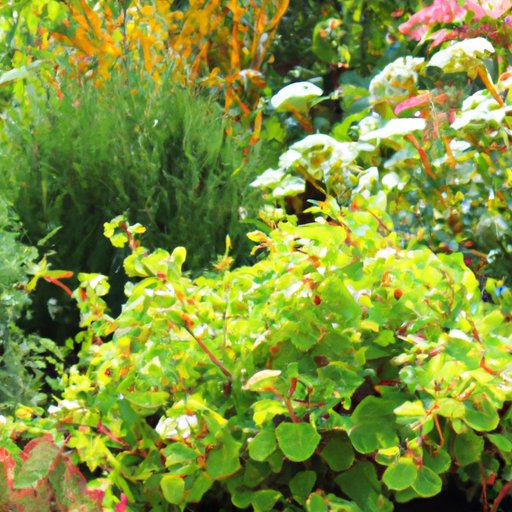Top 10 Perennial Plants That Come Back Every Year
Perennial plants are a great investment for any garden. Unlike annual plants that need to be replaced every year, perennial plants come back year after year, providing reliable color, texture, and form to your outdoor space. If you are looking for low maintenance, beautiful plants that can withstand different weather conditions and flourish year after year, then you need to choose perennial plants. In this article, we will introduce the top 10 perennial plants that are easy to grow and care for.
Echinacea
Echinacea, also known as coneflowers, is a hardy plant that blooms throughout the summer, attracting bees, butterflies, and birds. They come in various colors, from pink and purple to white and yellow. Echinacea prefers full sun but can also grow in partial shade. They are drought tolerant, making it ideal for hot summers or gardeners that don’t want to water often. Once established, they require minimal maintenance, and deadheading spent flowers will encourage new blooms.
Daylily
Daylilies are another low maintenance perennial plant that is highly recommended for beginners. They bloom from early summer to fall with various colors and sizes, requiring partial sun exposure. They can grow in almost any type of soil, and if you water them frequently, they will continue to bloom for months. Daylilies attract pollinators and are an excellent choice for ground covers or border plants.
Black-eyed Susan
Black-eyed Susan is a popular, long-lived plant that creates waves of cheerful yellow flowers throughout the summer. They prefer full sun or partial shade and well-draining soil. Black-eyed Susan is drought tolerant and able to withstand heat or even minor frosts. They are also excellent cut flowers, making them a great option for indoor arrangements. You should deadhead and trim as needed to ensure new growth and a long-lasting show.
Salvia
Salvia is a versatile and reliable plant that produces blue-purple flowers throughout the summer. They prefer full sun exposure and well-drained soil. Salvia can handle drought and heat without fail while attracting pollinators such as bumblebees and butterflies. After flowering, cut back a third of the plant’s height to promote new growth and keep its shape. Consider planting it as border plants or wishing wells that flank garden paths.
Hosta
Hostas are grown mainly for their foliage, which can be green, blue, yellow, or variegated. They prefer partial shade and a moisture-retentive and well-drained soil. Hostas don’t like to be under heat or drought stress; otherwise, they require minimal maintenance. Hostas can grow as little as six inches tall but can easily reach 3 feet tall and wide with age. You can plant hostas as ground covers, specimen plants, or around water features.
Sedum
Sedum, also known as stonecrop, is an incredibly forgiving plant that is excellent for beginner landscapers. They prefer full sun and well-draining soil. Sedum comes in various colors, from vivid green to pink and burgundy, and it blooms late in the summer. Sedum is drought tolerant and can handle various soil types. It also attracts pollinators and butterflies. Cutting back spent flower stems after blooming will promote new growth and denser plant growth.
Coreopsis
Coreopsis, also known as tickseed, is a cheerful little plant that is relatively easy to grow. They love full sun exposure and well-draining soil with moderate moisture retention. Coreopsis blooms yellow flowers all summer long, attracting bees and butterflies. They can handle hot and dry locations and also perform well in borders, rock gardens, and prairies. If you deadhead old flowers, coreopsis will produce new blooms and grow bushier.
Phlox
Phlox is an attractive plant with fragrant, colorful blooms that grows best in full sun and well-draining soil. They thrive in hot weather, and once established, phlox only needs occasional watering. Phlox grows from 1-3 feet tall, making it perfect for beds or vertical planters. They come in a range of colors, including white, pink, lavender, purple, or red, and some varieties have variegated leaves. Once they produce their first blooms, trim back their stems to encourage new flower production.
Coneflower
Coneflower, also known as echinacea, is a popular plant for good reasons. They prefer full sun to partial shade and can tolerate periods of drought or below-zero winter temperatures. Coneflower is an excellent cut flower and adds a touch of color to any garden. They bloom from mid-summer through early fall, attracting birds, butterflies, and bees. For best results, deadhead old flowers, and cut back the foliage to an inch or two above the ground in the fall.
Best Practices for Planting and Caring for Perennial Plants
Planting and caring for perennial plants is not complicated; however, some best practices will improve your plants’ health and longevity. Firstly, choose the right location; most perennials prefer full sun and well-draining soil, while others prefer partial shade or moist soil. Secondly, provide adequate moisture during their establishment period and regularly water them during dry weather. Fertilize with balanced soluble fertilizers before flowering or in fall if needed. Lastly, most perennial plants require dividing or pruning to keep their shape and promote new growth.
Conclusion
Perennial plants play a critical role in a low-maintenance garden. These versatile plants come in various shapes, sizes, and colors, making them an excellent choice for almost any landscape. They provide year-long color and texture to your garden without the hassle of repeating the planting every season. If you have limited time or budget, plant perennial plants this year, and enjoy their beautiful blooms for years to come.
